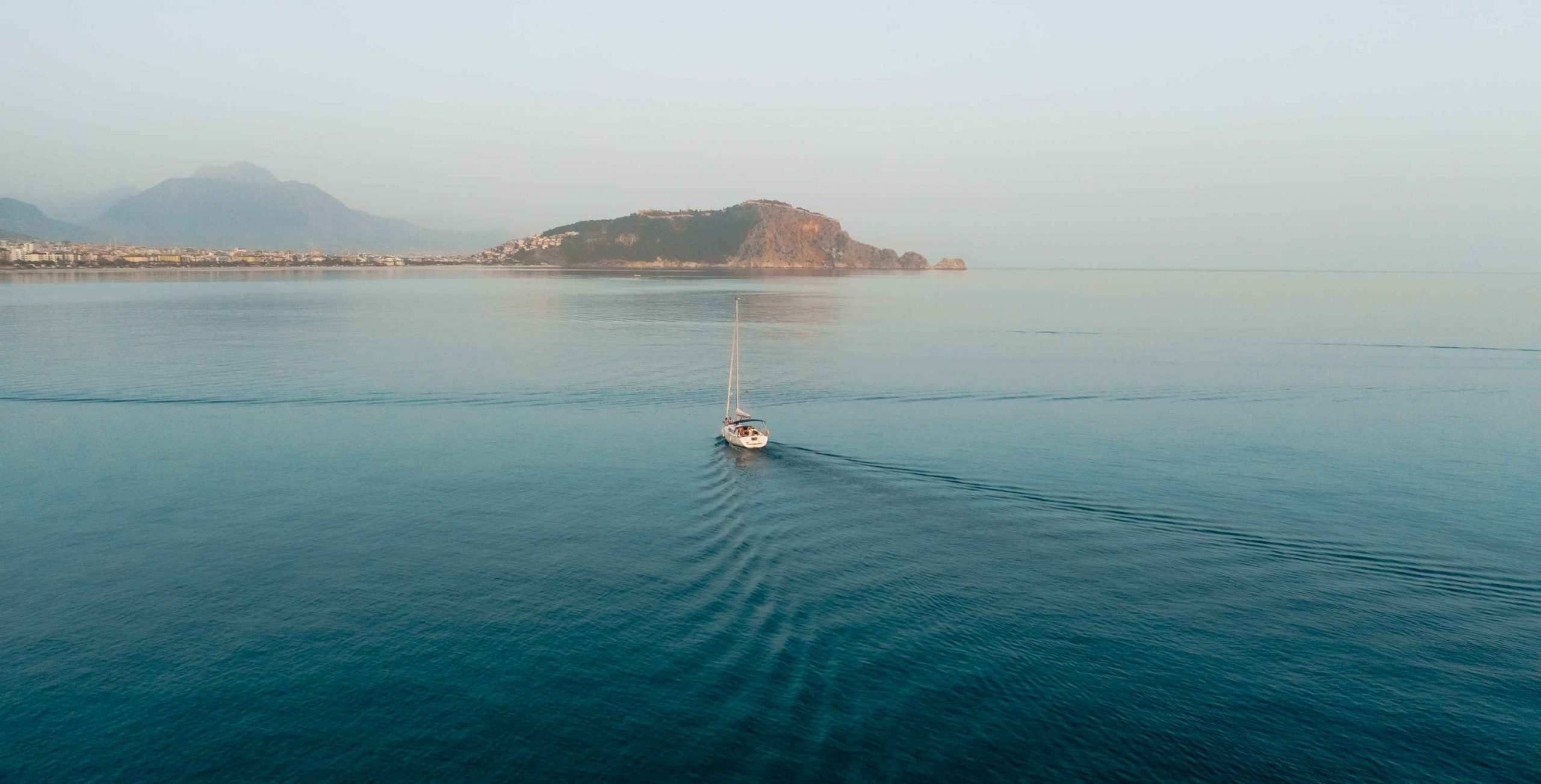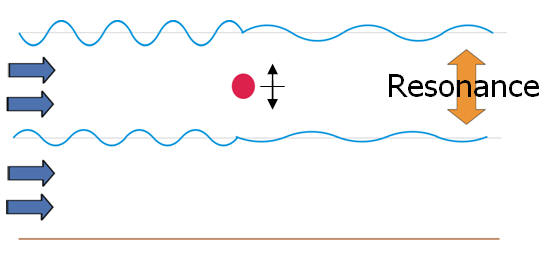Ship wave resonance in stratified seas
Waves of an unsteady disturbance in a 2-layer fluid

Oscillation of underwater vehicles (particularly submarines) in littoral zones, where water is more likely to be stratified, generates particular waves that can reveal information about size, speed and the depth of the vehicle. We studied the mechanism behind the generation of these waves and their interactions. For a steadily translating and sinusoidally oscillating disturbance in a two-layer fluid, up to eight waves may appear on the water surface/interface. Unlike in homogeneous fluid, nonlinear resonance can occur between these eight waves. We theoretically found, and numerically validated, that existence of stratification along with second-order nonlinearities can result in generation of a series of new waves that can travel away or toward the disturbance.

Artist rendering of disturbance wave resonance in a 2-layer density stratified fluid:
Assume our pirate is driving his (or her?) submarine in a strong stratified ocean well below the water surface. If the captain pirate does not know any math, he thinks that he is fully concealed from the police boats on the surface. But fortunately (or unfortunately!) at a specific speed situation changes. At that speed, it will send a signal (of course due to nonlinearity) to the surface…. you watch the fate of the poor captain pirate !!!
References:
– Alam, M.R., Liu, Y. and Yue, D.K.P., “Waves due to an oscillating and translating disturbance in a two-layer density stratified fluid”,J. Engineering Mathematics, Volume 65 (2009), Issue 2 Pages 179–201. [PDF]
– Alam, M.R., Liu, Y. and Yue, D.K.P., “Resonance Interaction of Ship waves in Stratified Seas”, Submitted to J. Fluid Mechanics.